Your essential guide to Singapore, 2022
Here’s what to do in this vibrant metropolis.

The prospect of emerging from the depths of travel deprivation has energised us. In our viewfinder is Singapore, the verdant Southeast Asian city-state adored by Australians, revered by food fanatics, and floated as the next potential bubble for quarantine-free travel. Singapore’s diminutive size belies its bounty of experiences. The usual suspects abound – the charming shophouses of Chinatown, Marina Bay Sands’ tony temptations – but the nation’s appeal lies in its constant evolution, its polyglot cultural mix, and its impressive efficiency – the gleaming MRT system, for instance, and masses of taxis that make scooting around town a cinch. Our essential Singapore travel guide covers the innovative bar and dining scene, vibrant shopping, and arresting architecture, and reveals that Singapore is more enthralling than ever.
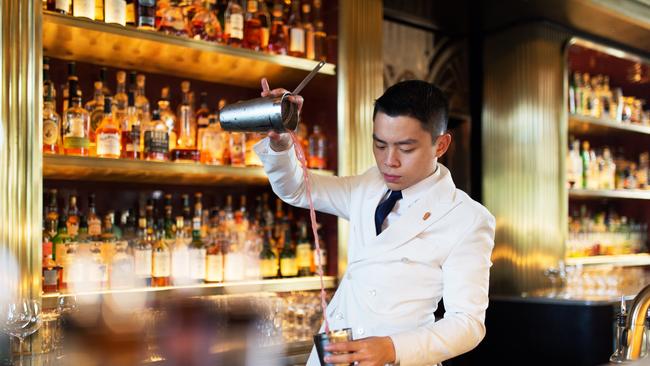
WHERE TO DRINK
Toasting the cocktail capital
Singapore is at the apex of Asia’s burgeoning cocktail culture, a swathe of its watering holes sitting proudly on the World’s 50 Best Bars list. Chief among them is Atlas, currently ranked fourth, which has the world’s largest collection of gin as well as cinematic Art Deco-inspired interiors worthy of Jay Gatsby. Meanwhile, Manhattan, ranked 14th, has its own dedicated rickhouse filled to the brim with aged spirits that lend delicious complexity to its menu of American inspired cocktails.
Hong Kong import Papa Doble (formerly The Old Man) has a compact list of 11 cocktails that pays tribute to Hemingway’s novels, all of which feature fat-washed spirits and original sous-vide infusions. The Sun Also Rises, for example, lends an Asian twist to the Negroni, with coconut oil fat-washed applejack, curry leaf-infused gin, pandan leaf, sweet vermouth and kaffir lime.

At the atmospheric Elephant Room, owner and mixologist Yugnes Susela has transported the scents and flavours of Singapore’s Little India district to his Chinatown bar fashioned with decorative elements such as russet Jaali vent blocks. The inventive cocktails are made with spirits from India such as Hapusa Gin, with turmeric and mango among its exotic botanicals. The well-considered snacks are not to be missed – the string hoppers with chicken curry are among the city-state’s best.
Ever-popular Native lives up to its name with cocktails made from regional spirits and local ingredients, including ants, foraged by owner Vijay Mudaliar. The insects go into a tropical mix of Chalong Bay Rum, coconut yoghurt, saltbased tapioca and soursop.
For a breezy experience by the Singapore River, there’s Caffe Fernet, which looks out to the historic Collyer Quay. With tan-toned booths and knockout views, it’s a fabulous setting for enjoying Italianaccented cocktails such as nifty Negronis and flavour-driven spins on Spritzes.
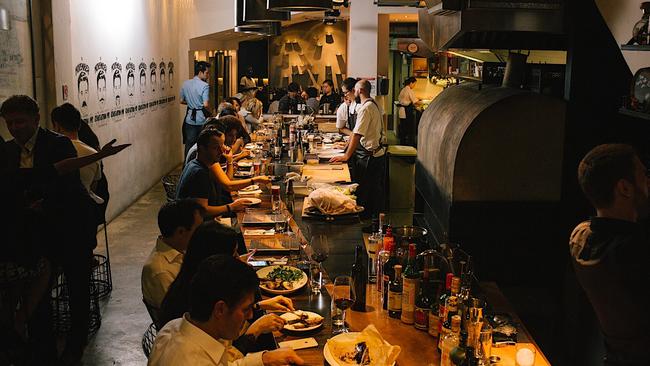
EATING OUT
From hawkers to haute cuisine
Singapore’s culinary scene is legendary. Nowhere else in the world can you eat as affordably (or extravagantly) as this food-obsessed city-state where treats tempt at every turn. When in doubt, head to the no-frills hawker centres – any one of them, really – and odds are you’ll stumble on well-priced, mouth-watering food. One of the most admired is Hawker Chan, previously home of the world’s cheapest Michelin-starred meal. They lost their star in 2021. For $3 you can enjoy an ambrosial dish of chicken poached in soy sauce and served on fragrant rice. Another culinary treasure, Hill Street Tai Hwa, is as famous for its hours-long queues as for its unrivalled bak chor mee, chilli- and vinegar-spiked minced pork noodles.
Spring Court, one of the city’s oldest restaurants, continues to draw a crowd for its distinctively Singaporean-Chinese fare. Succulent dishes such as roast chicken slicked with a layer of minced prawns and Chinese cabbage stewed with dried scallops offer a glimpse into the old foodways when migrants of every race contributed to the richer, piquant flavours of the island’s early Chinese food.

The family-run Hua Yu Wee, set in the last remaining beachfront mansion of its kind, is another window into a bygone era. Its entrance along Upper East Coast Road is really the back of the house; its true frontage, now shrouded by thick rainforest, once faced the sea, which has since been reclaimed in the name of national progress. Ask for a table on its balmy alfresco terrace and devour time honoured favourites such as chilli crab, caramel soy sauce prawns (har lok) and steamed tilapia doused in a tangy Nyonya gravy.
A meal at Candlenut, the world’s first Michelin-starred Peranakan restaurant, is always a treat. Chef Malcolm Lee makes an art of elevating Singapore’s most famous cuisine – an aromatic hybrid of Chinese, Indonesian and Malay flavours – with the best ingredients and Western techniques. The stylish eatery is part of Como Dempsey, home to a flock of restaurants at Dempsey Hill, along with Dover Street Market.
Once a haven for early Chinese migrants, Chinatown is now the setting for some of the city’s buzziest restaurants. At Nouri, Brazilian chef Ivan Brehm investigates how foods of the world are connected with his “crossroads cooking”.
A recent tasting menu veered from pan-seared Hokkaido scallop to Vietnamese-style soy-glazed fish to French pigeon infused with Mexican flavours. Multi-concept space Appetite is one floor up, housing an art gallery, record lounge and an eight-seater open-galley kitchen.
Still on bustling Amoy Street, Cloudstreet remains one of the city’s most in-demand eateries. One-time Australian chef-owner Rishi Naleendra draws on his Sri Lankan heritage to craft a unique culinary approach. His best-loved dishes include yellow curry of Western Australian marron, roasted lamb saddle with baby jackfruit curry wrapped in radicchio, and “Vegemite on toast” petit-fours. In the curvaceous dining room fitted with brass and stone at Restaurant Euphoria, Singaporean chef Jason Tan showcases his love for vegetables by recreating the mother sauces of French cuisine using only botanicals. The results are impressive tasting menus full of flavour and textures, and the unexpected use of humble local ingredients such as patin fish.
Intrepid South Korean chef Sun Kim, a former sous-chef at Tetsuya’s in Sydney, heads Meta, the undisputed darling of the fine-dining scene. Huddled over blond brushed-wood tables, devotees gush over Kim’s contemporary cuisine which parses elements of his native South Korean cuisine with classic European techniques.
Speaking of Tetsuya Wakuda, his gastronomic temple Waku Ghin recently reopened after major renovations and comes with even loftier price tags. Its entry-level tasting menu takes diners on a memorable, meandering journey from bar to chef’s table to dessert alcove. Or take a seat at the no-reservations, newly expanded Waku Ghin bar, which serves inspired cocktails and exquisite small bites, from Spanish-style bikini sandwiches to Japanese wagyu tartare.
Burnt Ends, the Michelin-starred barbecue restaurant of Perth-born firestarter Dave Pynt, is still a sizzling-hot option. Lock in a reservation long before you arrive in the city to try Pynt’s sensational smoky fare, prepared in a custom-designed, wood-burning kiln.

WHERE TO STAY
Historic hideaways and island retreats
Singapore’s skyline was forever changed when the enormous Marina Bay Sands gaming resort was erected in 2010. Its 2,561 rooms and suites are framed by floor-to-ceiling windows that bathe each living space in natural light while offering soul-stirring views of the city. If nothing else, stay here for access to the infinity pool, designed to offer the illusion of floating on the brink of the building’s edge nearly 200 metres from the ground.
After years of delay, the 198-room Dusit Thani Laguna Singapore became the first new luxury hotel on the island to open in the thick of the pandemic. This gorgeous urban resort offers direct access to two private 18-hole championship courses designed by Andy Dye. Another temptation is its soothingly spacious Devarana spa.
For the past 18 months or so, the pool villas at Capella Singapore on Sentosa Island have served as the closest thing to a private beach getaway for travel starved Singaporeans. Spread across two 19th-century colonial buildings surrounded by rainforest, the resort offers six categories of accommodations, the finest of which are the one- and two-bedroom villas with plunge pools.
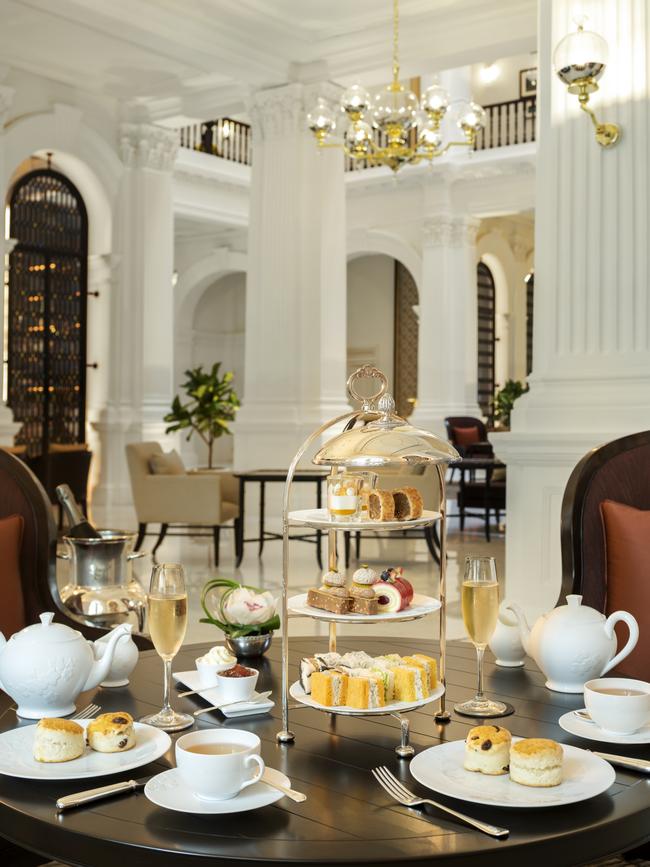
In 2019, the fabled Raffles reopened after a major two-year makeover. Its 115 generously sized suites retain their old-world grandeur (teakwood floors, magnificent travellers palms and tropical verandas) alongside technology updates and Peranakan accents that reflect Singaporean culture.
The brand-new adults-only Outpost Hotel in Sentosa sits on a hilltop overlooking the Singapore Strait. Most of its 193 rooms, crisply appointed in black and white, look out to the ocean, while its curvaceous infinity pool guarantees a front-row seat to vistas of the South China Sea.
Compact lofts and savvy studios define the Wanderlust Hotel in the heart of Little India where the skyscrapers and malls feel a world away. Among its many charms is the impossibly fashionable Sri Lankan restaurant Kotuwa, helmed by Australian chef Rishi Naleendra.
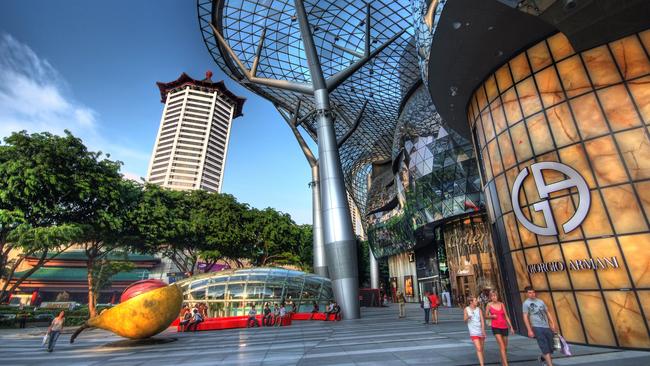
A SHOPPING MECCA
The elevation of retail therapy
Singapore is home to some of the splashiest global flagships in Southeast Asia. At The Shoppes at Marina Bay Sands the spherical Apple store floats on water like a futuristic snow globe emerging from the deep. Similarly, Italian puffer jacket purveyor Moncler has a head-turning store upholstered in a quilted façade. When your legs start to ache from wandering the 75,000 square metres of retail space, pop into Natureland, the nation’s preferred massage spa where experienced masseurs have soothing down to a science.
Studded with more than 20 chic malls and six department stores, Orchard Road has long been a repository of ultra luxury such as the glorious Van Cleef & Arpels store, which occupies a double volume space in ION Orchard, its jewels winking alluringly against soft light. The sleek mall brims with upscale stores, including an elegant ode to German camera manufacturer Leica, which also offers photography workshops for the enthusiast. In a basement space, jaunty local leather goods maker Bynd Artisan sells personalised paper and leather accessories, while Crate and Barrel with its perkily stylish home furnishings occupies a large space on ION’s fourth floor.
Down the road, Paragon tempts with yet more designer labels, art galleries and fashionable eateries. The outpost of French contemporary art gallery Carré d’Artistes is a warm, welcoming space stocked with original works aimed at younger buyers, while Taiwanese crystal art shop Liuli purveys exquisite glass sculptures, vessels and jewellery by artists Loretta Yang and Chang Yi.
The works of Singapore’s most promising young designers are conveniently clustered in Design Orchard, an integrated retail and workspace in the heart of the shopping belt. Come for the more than 60 brands selling everything from fashion and skincare to beanbags and candles, and stay for the dynamic events and workshops that happen all year round – from scarf designing to block printing.

WHAT TO SEE
Futuristic greenhouses and inviting islands
An airport is an airport, until you find yourself in the sensory extravaganza that is Jewel Changi. It’s the only transportation hub in the world that offers shopping, dining and entertainment on such an epic scale. The sight of the colossal Rain Vortex surrounded by an indoor forest with suspended walkways bathed in coloured light is surreal, and when you can tear yourself away from the installation there are 300 fine stores and restaurants to discover. Early baggage check-in has rarely seemed so appealing.
Sentosa, the island playground off Singapore’s southern coast, offers plenty to do away from the concrete confines of the city. Go zip-lining at Mega Adventure Park, book a round of golf at Sentosa Golf Club’s two award-winning courses or unwind with young and young-at-heart family members at Universal Studios. Sentosa’s mirror-flat beaches are supremely popular with locals and expats, who come with dogs in tow and sip cocktails by the water.
The Southern Ridges is a great way to discover parts of Singapore seldom seen by visitors. This 10-kilometre network of green spaces connects five parks along the island’s southern edge in that impeccably manicured style the nation is famous for. The trail, which begins at Mount Faber Park, takes between three and five hours on foot.
For a longer trek, wander through the Rail Corridor, Singapore’s verdant answer to New York’s High Line or the Promenade Plantée in Paris. Once a railway line between Singapore and the rest of the Malay Peninsula, the park cuts across the country’s 24-kilometre span from north to south through lush landscapes, refurbished tunnels and restored bridges.

The stunning World Heritage-listed Singapore Botanic Gardens offer an oasis of natural splendour in the heart of the city. Dating back to 1822, the gardens harbour a treasure trove of heritage trees, a dazzling orchid collection, six hectares of tropical rainforest and a gleaming lake where balletic swans glide.
There’s much to see at Gardens by the Bay, such as the climate-controlled, seashell-shaped conservatories, the Flower Dome and Cloud Forest. Wander by an awe-inspiring variety of plants and 40 sculptures by renowned artists that lend a dramatic dimension to the landscape. At dusk, stroll across the 22-metre-high aerial walkway suspended between two of the “Supertrees” (tree-shaped vertical gardens) to enjoy wondrous panoramas of the city.
To witness the largest collection of modern art in Southeast Asia, venture to the National Gallery Singapore, whose intricate design by Studio Milou Singapore is itself a work of art. The complex is spread across two grand national monuments – City Hall and the former Supreme Court – between which a terrace was built to match the height of the gallery. The mesmerising aluminium slats on the ceiling that cast dappled shadows throughout the day are a nod to the island’s tropical woods.
To ramble into Haji Lane, Singapore’s narrowest street, is to plunge into a different zone altogether. Colourful, indie and quaint, it sits in stark contrast to the gleaming modernity of the world around it. Hidden away in the historic Kampong Glam district, Haji Lane’s hip little stores, restaurants and bars have earned it the honour as one of the coolest streets in the world according to the 2021 edition of the annual Time Out Index.

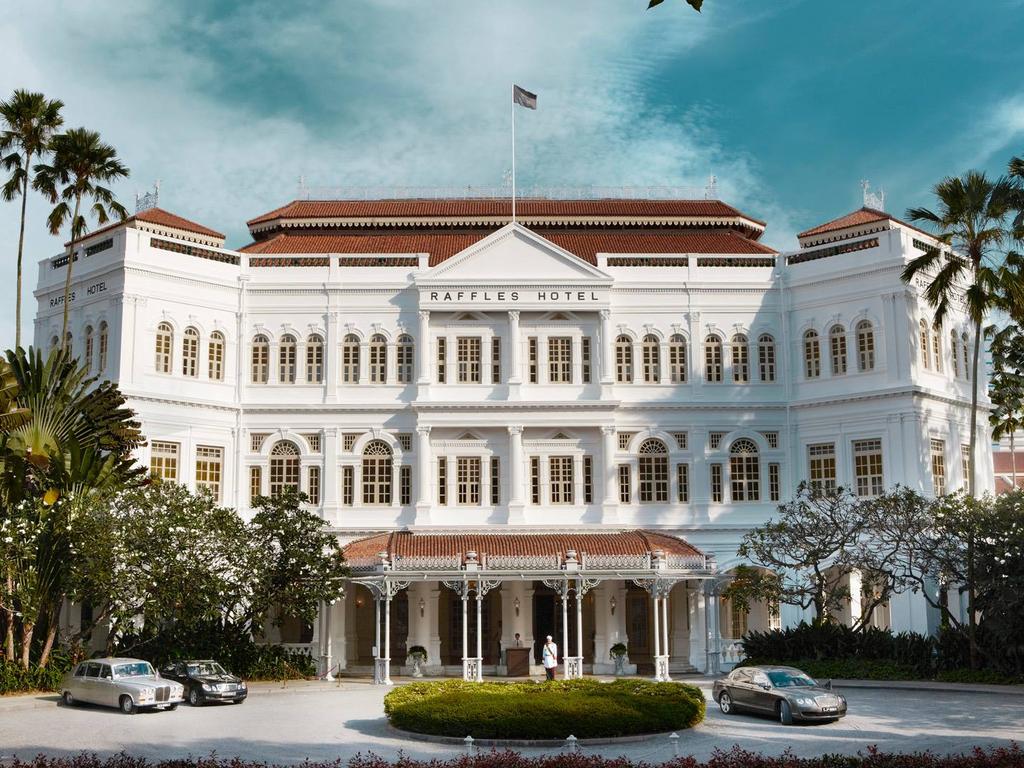

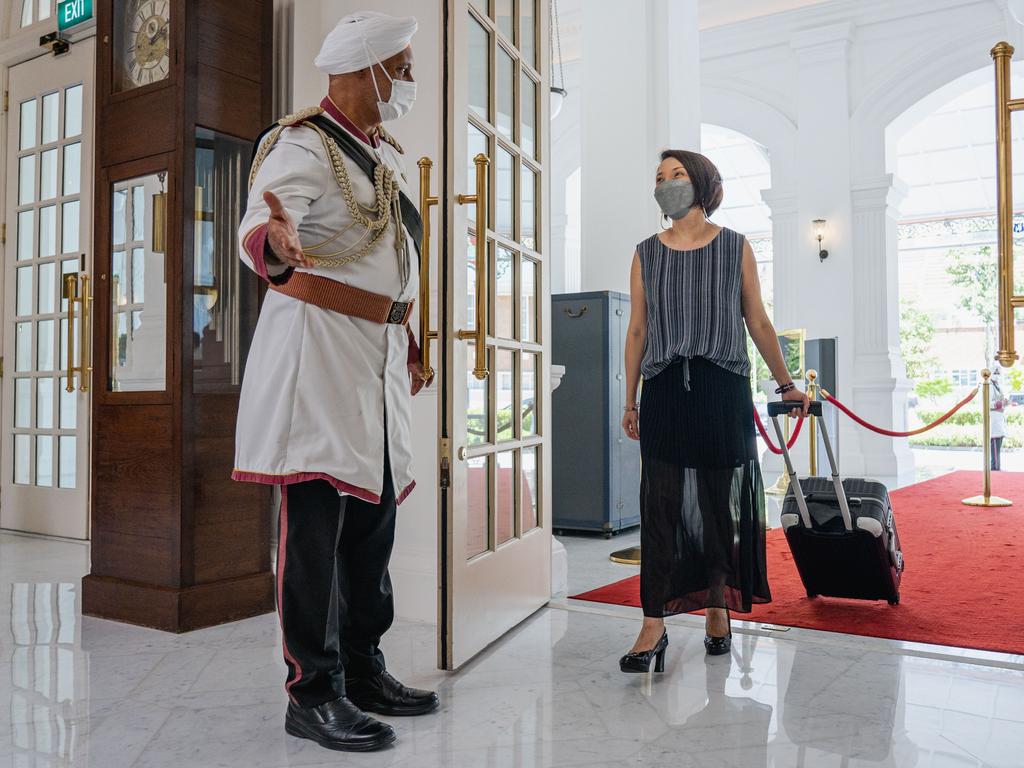

To join the conversation, please log in. Don't have an account? Register
Join the conversation, you are commenting as Logout